Disclosure: Things That Fold earns commission from links on our site.
The Hedkayse is a revolutionary new helmet design– and not just because it folds. What started as a project to produce a soft foldable bike helmet has led to an unprecedentedly tough and durable design that can’t be matched by a standard EPS foam helmet. The fact that it folds is almost just a side benefit of the helmet.
The outside shell is rip-proof, scratch-proof, and all around extremely resilient, while the inside liner is soft and squashy. When you put the two together, you get a helmet that can take any sort of beating, while keeping its comfortable protective interior unharmed.
A typical helmet needs to be replaced after a crash. Even after a relatively minor hit, or a sudden drop onto a hard surface, a helmet may lose some of its effectiveness.
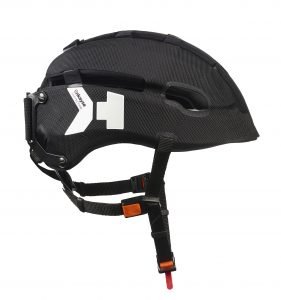
But the Hedkayse team has dropped the helmet off a cliff, run it over with a bulldozer and a car, dropped a ton of rocks on it, and knocked it hundreds of times, and found that its safety performance was still virtually identical to that of a brand new helmet.
Since the helmet was first introduced to Indiegogo in 2015, it has been on Dragon’s Den (the British version of Shark Tank), earned patents on its innovative design, appeared in cycling tradeshows, and been widely talked about and reviewed.
In 2019, four years since its launch on Indiegogo, the helmet has finally come to market. In that time, the team has refined a large part of the design— such as making the outer shell tougher and more visually appealing, and adding safety features such as visibility and resilience at extreme temperatures.
Now that the Hedkayse ONE is officially in production, we figured it’s time to tell you everything you need to know about this highly anticipated helmet!
About the Hedkayse ONE
The Hedkayse ONE is a rugged folding helmet that can be easily packed and roughly handled. It is truly multi-impact, so it doesn’t need replacing after an impact or a forceful drop. It is also soft on the inside and fairly versatile size-wise. The only major downsides are that it is a bit heavier and not as foldable as the other folding helmets, and it’s more expensive.
The helmet is a significant redesign of the traditional bicycle helmet. Here is a comparison of how a traditional helmet works, compared to the Hedkayse ONE.
For some background, most bike helmets are traditionally made of three critical parts:
- Outer shell
- Liner
- Straps and buckle
Outer Shell
The outer shell of a helmet is the first thing you typically see when you look at the it– it covers the entire outside of the helmet and is usually a nice solid color, like white or black. Superficially, it looks like it’s just the skin of the helmet. However, the shell is critical for the helmet’s safety, as it keeps the helmet from breaking apart or getting caught mid-rotation on the pavement in an impact, among other reasons.
Typical Shell
In a traditional helmet, the shell is often made of a strong thermoplastic like ABS or polycarbonate to spread the force of an impact and provide structural integrity to the helmet. The firm plastic is at the front line during an impact, colliding with the pavement and spreading some of the force of the blow laterally.
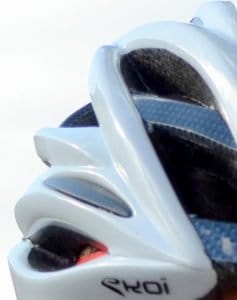
Hedkayse Shell
The outer shell of the Hedkayse is made of a heavy-weight military grade ballistic nylon, which is flexible rather than rigid. Think of the cordura fabric on a suitcase. The flexible material is what allows the helmet to fold, and adapt to such a wide range of head sizes.
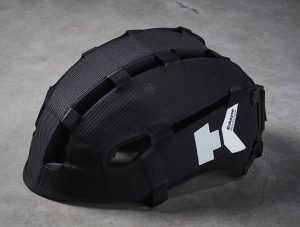
But the Hedkayse shell also has some other unique and interesting features.
- It is light while still being very strong
- It is tear proof and resistant to sharp objects
- It is washable
- It has reflective decals (for additional visibility at night)
- It has a low friction coefficient with the ground (a safety feature designed to provide rotational flexibility and minimize tugging forces in a crash)
A fabric shell would not be a good thing on an ordinary EPS helmet, as the fabric would not provide much protection in the event of a crash. But in the soft, flexible Hedkayse, the fabric shell is both necessary as well as functional.

Typical polycarbonate shell 
Hedkayse fabric shell
Liner
According to the Bicycle Helmet Safety Institute, “The liner is the most important part of the helmet, the foam layer where the energy of the crash is managed.” It is the (usually black) thick layer found just underneath the outer shell. As the main part of the helmet, the liner is designed to slow down your movement in a crash, so that when you hit the ground, your motion is slow enough that the impact does not cause severe head trauma.
Typical Liner
Traditionally, most helmets are lined with Expanded Polystyrene (EPS) foam. This is a firm, lightweight plastic that compresses on impact to gradually slow down any movement. It is very similar to Styrofoam. You probably would recognize EPS as the packing material that comes in the box whenever you have a large, heavy item shipped to you.

EPS foam 
Closeup of EPS foam
EPS works by incorporating lots of tiny air bubbles in its structure– it’s about 98% air. When you crash, the EPS foam crushes and absorbs some of the impact. There are some good things about it, such as its light weight, low cost, and effectiveness. The main downside of it is that it’s single-impact— meaning that it dents and cracks when hit, affecting safety, and you can’t always tell when it’s been damaged. It also is only calibrated to a certain level of impact– it’s not good at cushioning against light knocks, and “bottoms out”, or completely collapses, against harder impacts.
With these safety drawbacks in mind, the creators of Hedkayse decided to try a different kind of foam.
Enkayse Liner

EPS liner 
Enkayse liner
The Hedkayse team wanted a material that could take impact after impact without losing any of its effectiveness. The material they landed on was a form of Expanded Polyurethane (EPU), a soft foamy plastic often used as a thermal insulator, among other applications.
After trying hundreds of different EPU formulations, the team finally settled on an exact recipe that cushions against impacts and has all of the other safety requirements, like an ability to work at extreme temperatures. Like memory foam, the proprietary polymer material indents when you push on it, but fully recovers within a few seconds.
With the ideal material in mind, the Hedkayse team experimented with aspects like spacing, density, and thickness, along with adjusting other parts of the helmet, until they finally arrived at a safe, comfortable, and good-looking design that meets all of the European safety requirements.
According to Hedkayse, the EPU liner provides the same protection as a traditional helmet, but the protection is repeatable. Rather than deform on impact, it absorbs the energy in a slow response, and then recovers. A few other advantages of the soft, flexible material is that it:
- Protects against small knocks as well as hard ones; EPS does not protect against small hits which don’t cause head trauma but still hurt.
- Is anti-microbial
- Is hand washable
For now, Enkayse is only used in Hedkayse’s helmets– although they are planning to license it out to manufacturers of other protective equipment as well.
Straps and Buckles (Retention System)
The chinstraps and buckle are a critical part of the helmet and are tested in every helmet safety standard— the major standards all require some sort of strap yank test to ensure there is no breakage of the straps or buckle in an impact (see details here). The European standard has additional requirements around being able to open the buckle with one hand when the straps and buckles have been subjected to stress after the basic testing.
For most decent helmets, the retention system usually involves a nylon chinstrap that goes under your chin, a buckle to close the chinstraps, and an “occipital stabilizer” that goes along the back of the helmet to keep it fitting tightly. There’s also usually a ratchet in the back to adjust the helmet’s size.
Typical Retention System
Here is what a retention system looks like on a typical helmet:
Typical Chin Straps and Buckle
The chinstraps come out in two sections, one from each side of the helmet, above each ear. Each section looks like a letter “V”, so that each chin strap straddles each ear. There’s typically a way to adjust the length of the chinstraps and the height of the “V”.
The buckle is typically a standard pinch-release buckle, the same plastic buckle that’s used ubiquitously in luggage, backpacks, fanny packs, pretty much everywhere. Some helmets use a magnetic buckle instead.
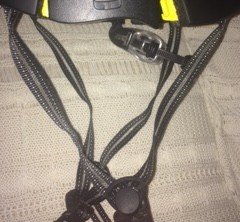
Typical Occipital Stabilizer and Ratchet
There is usually a plastic piece that spans the part right above the back of your neck, to keep the helmet snug on your head. It often has a ratchet mechanism to let you adjust the tightness.
Hedkayse Retention System
Hedkayse took a very different approach to their retention system, in order to make the helmet as customizable and comfortable as possible.
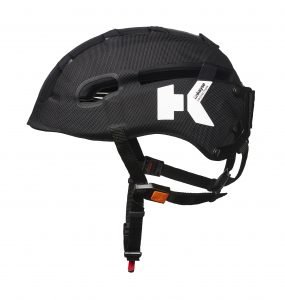
Hedkayse Quick-release Adjustable Ratchet Chinstrap (QARC)
The chin straps are adjustable, like most helmets. However, the adjustment mechanism is a lot nicer than for a typical helmet. You can see the three length adjusters in orange below. There’s one on each side, and one under the chin. These should be relatively easy to adjust. Aside from these buckles, the chin straps can also slide laterally to make the “V” around each ear wider or narrower (you can watch a video on how to fit the helmet below).
The buckle is neither a pinch release type, or magnetic. Instead, Hedkayse uses their own patented system they call QARC, which can open easily with one hand by pulling a tab. Although some motorcycle helmets have a kind of quick-release clip, it is extremely rare among bicycle helmets, and is truly unique among folding helmets.
Hedkayse X-strap and Velcro Back Strap
Instead of an ordinary plastic strap to support the back of the helmet, Hedkayse uses what they call the “X-strap” system, which is essentially a support that holds two crossing straps. The “X” can be shifted up or down to give more customized support. The straps eventually turn into part of the chin straps.
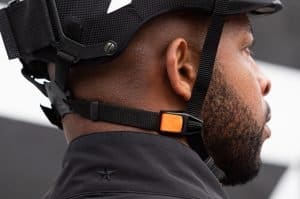
Above the X-strap is a back strap. The back strap is the main way to customize the fit of the helmet, and is what allows the Hedkayse to fit such a broad range of head sizes. The strap feeds through a loop, doubles back and then velcros in place.
Although this strap is a crucial part of what gives the Hedkayse ONE its incredible flexibility, it does have its drawbacks. Mainly, it takes some time to adjust, and you need to adjust it every time you open or fold the helmet.
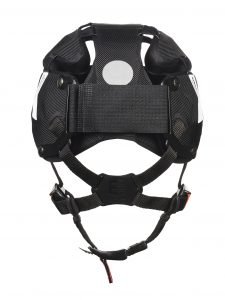
The combination of the adjustable back strap, X-strap, chinstraps and clip, together with the soft, pliable Enkayse liner and flexible outer shell, allows the Hedkayse One to adjust to fit any head shape or size.
Summary of Hedkayse ONE’s Benefits and Features
The truly unique construction of the Hedkayse ONE gives it a bunch of nice features:
- Incredible durability– it’s practically indestructible, and works exactly the same even after being dropped and bashed hundreds of times.
- Protection against small hits, which ordinary EPS helmets do not cushion against
- Works in extremely hot, cold, dry, or wet conditions (like most helmets)
- Can be packed without getting damaged in transit, and smushes into tight places due to its soft and flexible construction
- Fits on any head shape or size– even on top of a ski cap– and the fit is extremely customizable
- Highly visible due to the bright reflective decals on its sides and back
- Can be unfastened quickly with one hand due to the quick-release pull tab
- Aesthetically looks nicer due to the fabric outside liner, overall high quality construction, and urban look
- Adaptable outside liner has room to hook up accessories like a camera
- Anti-bacterial and hand-washable
Recommendation
With all of the Hedkayse’s positives, it would seem like a flat-out positive recommendation would follow.
However, the helmet has some drawbacks, which are also partially due to the fact that it uses an Expanded Polyurethane foam rather than EPS. As a result of using this material, the helmet is heavier and warmer than most helmets. It also doesn’t fold so tightly, and folding or opening it requires some tinkering with the back strap. The Hekayse ONE is also on the pricier end.
Overall, we recommend the Hedkayse, as long as you’re not expecting an ultra-light, cool racing helmet, or a helmet that folds instantly and compactly.
Where would it make the most sense to use the Hedkayse ONE?
If you need a helmet you can travel with, the Hedkayse ONE is absolutely ideal since it can be packed really tightly and withstand any impacts from traveling. It’s also obviously the ideal helmet for any sort of biking where you expect to fall. Finally, if you’re not too concerned about foldability but want an attractive helmet you can bike to the office with and fold sometimes, then the Hedkayse ONE is also great for that.
Who the Hedkayse ONE Would Be Perfect For
The Hedkayse ONE would be ideal for anyone who:
- Travels frequently and enjoys bikeriding on their trips
- Wants a classic-looking helmet to bike to the office in, and doesn’t care too much about quick folding or having a light, airy helmet
- Participates in intense mountain biking or stunt riding
[ The Hedkayse ONE is currently only safety tested for EN-1078 (Europe). Hedkayse feels confident that the helmet will soon also be safety certified for the rest of the world, including the US and Canada, but until then it is only available in Europe. We will update this post once we know more. ]
Foldability
Foldability is the one area where the Hedkayse ONE does not perform so great, due to the number of steps involved and its so-so folded size.
How to Fold/Unfold
Folding the Hedkayse ONE
Folding the helmet likely takes some time and attention, although with practice we expect it would take less than 30 seconds.
The video below shows step-by-step how to fold the Hedkayse ONE. Note that this is based off an older version of the Hedkayse ONE, although the steps are basically the same.
To fold the helmet, you have to:
Unfasten the Rear Strap
Undo the velcro, and pull the strap out from behind the loop holding it.
Untuck the Rear Panel
Pull the panel out from the side panels sandwiching it.
Flatten the Helmet
Squash the sides of the helmet together. You can restrain the helmet further by compressing it with the “wrap strap” that comes with the helmet.
Unfolding the Hedkayse ONE
To unfold the helmet, you have to do the steps in reverse:
- Hold open the helmet: Undo the wrap strap (if you used it), and pull the sides of the helmet out
- Insert the rear panel: Tuck the back part of the helmet back in, sandwiching it between the side panels
- Fasten the helmet: Slide the rear strap into the plastic bracket, double back, and then attach it with the velcro
Folded Dimensions

Open 
Folded
The width compresses by about a third initially. With the compression strap the width reduces to about half, down to 11cm (4.3″)
| Open | Folded, with wrap strap |
| 11.8″ l x 8.3″ w x 5.5″ h | 14.2″ l x 4.3″ w x 5.5″ h |
Portability
When using the compression strap, the Hedkayse ONE resembles a football and is quite portable. It can be easily compressed into a backpack or carried by hand. However, it is about 1.1 lb (500g) which is on the heavier end, detracting a bit from its portability. The only real downside is having to use the compression strap to get it to a nice compact shape.
Fit
The Hedkayse ONE has a bunch of features to help customize the fit, including the X-strap system, the back strap, the two-way adjustable chinstraps and adjustable clip, and the flexible Enkayse liner which contours to your head shape. This gives the Hedkayse an extremely personalized fit.
The helmet is designed to fit any head shape or size (the “one” in the name is due in part to the fact that it’s one-size-fits-all). Officially, the helmet is meant for head circumferences of size 49 – 58.5cm (19.3″ – 23″), although in practice it can go even wider, at least to 62cm (24.4″).
Here is a video and instructions showing how to open and fit the helmet:
The Hedkayse ONE goes wide enough that you can wear a ski cap underneath it in colder weather.
Safety
Hedkayse is safety tested according to EN-1078 for Europe. The company is currently working on getting certified in the rest of the world, including the US (CPSC), Canada, Australia/ New Zealand, and Japan.
Based on this, we can safely say that the Hedkayse ONE meets the same basic safety requirements as all other helmets that are sold in Europe. The standard mainly tests the helmet’s ability to cushion against a fall from a height of about 5 feet (1.5m) or so, or 12 mph (5.4 m/s), against an anvil, under various extreme and real-world conditions. If the helmet is able to pass US CPSC safety testing, then it will have met the same minimum safety requirements as virtually all standard bike helmets. We will update this post once we have more information on Hedkayse’s potential CPSC certification.
In terms of differences between the Hedkayse ONE and other helmets, the fact that it uses a soft, compressible liner may have some relevance to safety. The positives mentioned by Hedkayse are that:
- The Hedkayse ONE can protect against a wider range of impacts– specifically knocks that are not powerful enough to compress standard EPS helmets but may still cause some damage to the head
- It doesn’t have the problem of hidden fractures or faults which aren’t visible to the eye, but nevertheless reduce effectiveness– an issue that can sometimes occur with EPS helmets which have been dropped
We have not been able to find any negatives associated with the soft helmet liner based on our quick online research, although granted the technology is still new.
The graph below shows the performance of an EPS helmet (grey) degrading as the helmet is subjected to more impacts, while the Hedkayse’s performance (green) stays essentially flat. Note that even for relatively minor impacts of about 1.5 feet with an 11 lb weight inside (first four bars), the EPS helmet starts to show an irreversible decline in protection.
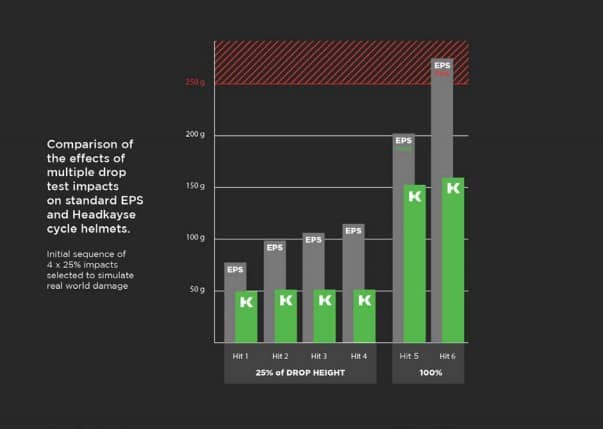
In terms of the outer shell, Hedkayse had initially displayed the helmet with a firm plastic shell before deciding on a ballistic nylon fabric for the final design. One possible question is whether a fabric shell is as safe as a rigid shell made from a material such as ABS or polycarbonate. Again, it may be too early to know if there is any effect whatsoever of a fabric shell on safety. Hedkayse’s website notes that the outer shell has a “low friction surface” to minimize tugging forces from the road surface in the event of a crash, so we assume that the shift to fabric was a conscious decision thought about from a safety perspective.
If you’re interested, you can read Hedkayse’s technical review on safety here.
Options
The Hedkayse ONE only comes in one size, since it is one-size-fits-all.
In terms of color choices, the Hedkayse currently has eight options listed on their site: Black, Yellow, Grey, Red, Premium Black Leather, Premium Tan Leather, “Kandesent”, and “Zulucow”.

Black 
Yellow 
Grey 
Red 
Black Leather 
Tan Leather 
Kandesent 
Zulucow
The Black and Tan leather versions are significantly more expensive than the base colors.
The last two are “Collabs“, meaning that they were created “in partnership with leading brands”, according to Hedkayse’s website (Kandesent is a company that creates cycling clothes for women, and Zulucow is a company that sells African-style fashion accessories).
Hedkayse can also accommodate custom skin designs.
Reviews
Professional
Based on other sites’ reviews of the Hedkayse ONE, here are the main takeaways we found.
The main things people liked about the helmet were its:
- Durability (multi-impact features)
- High-quality construction
- Stylish look
The main things people didn’t like about the helmet were its:
- Weight
- Warmth
- The time it takes to adjust it
There was not much consensus on its comfort or fit.
Overall, reviewers seemed to like the helmet for its durability and innovativeness, but apparently did not love it enough to replace their existing helmets. To be fair, many of the other sites that reviewed the Hedkayse were focused on cycling, so in all likelihood they would be assessing the helmet differently from the average commuter.
Average Users
We looked at submitted reviews to see if the typical user feedback was any different from professional reviewers’. Most of the user reviews we have so far are from backers and early adopters.
The user reviews were fairly similar to the professional reviews. The main thing the average user liked about the helmet was its high-quality construction. The main things the average user didn’t like about the helmet were its weight, limited foldability, and the time it takes to adjust it.
Price and Where to Buy
The Hedkayse is definitely on the more expensive end of folding helmets, although obviously a lot has gone into it in terms of engineering and high-quality materials.
The price for an ordinary helmet is 150 GBP (about $200), and the price for the premium leather versions is 280 GBP (about $360).
The Hedkayse ONE is currently for sale only on Hedkayse’s website.
Conclusion
The Hedkayse ONE is a well-made, durable, multi-impact helmet that looks stylish and fits well. It takes some time to get used to, and is a bit heavy, but if you’re the kind of person who tends to jostle their helmet a lot or do some serious mountain biking, the Hedkayse ONE may be a bit of a game changer for you. It’s not the most foldable helmet around, but if you’re only planning on folding it infrequently– such as for traveling– its durability and classic urban look makes it well worth it.
Let Us Know What You Think!
We would love to know what you thought about the Hedkayse, and our review of this incredibly novel folding helmet. Let us know your thoughts, questions, and whatever else is on your mind down in the comments section below!
This review was written by the Things That Fold editorial team. We have based our review on information we found publicly online, such as the vendor’s website, online sales channels, other review sites, and news articles. We do not currently own this product.
Pictures of the Hedkayse ONE were taken from Hedkayse’s website, its Indiegogo page, or from video screenshots found online.
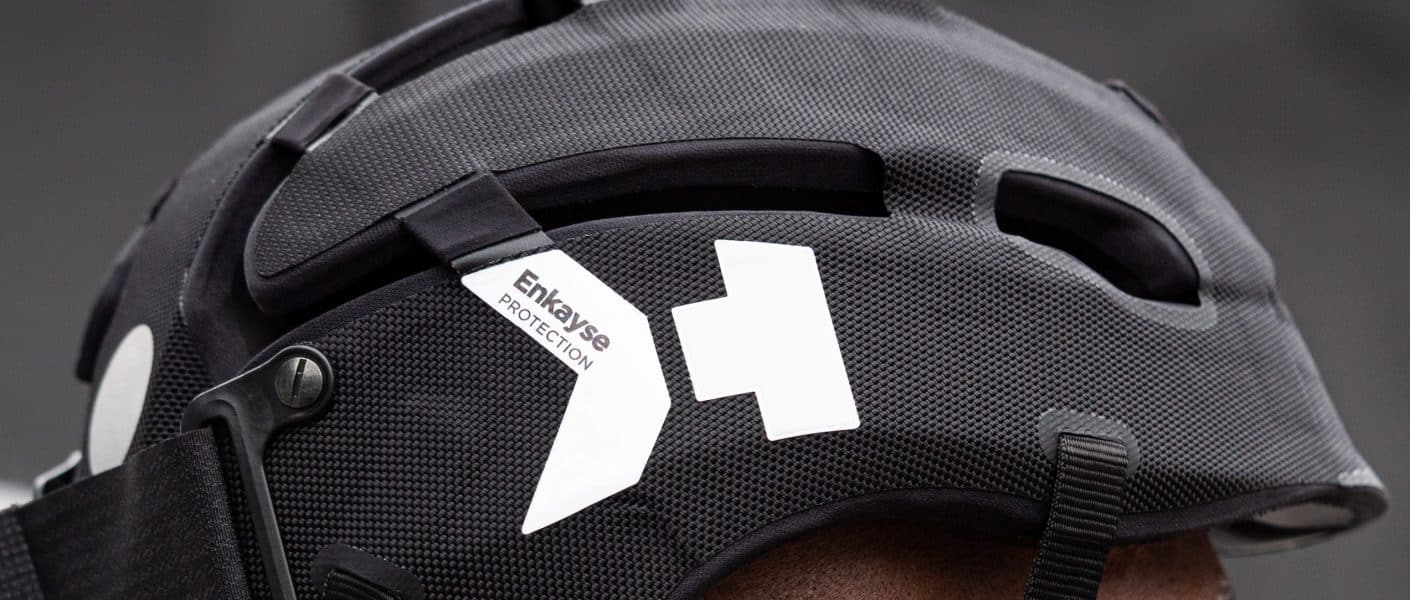
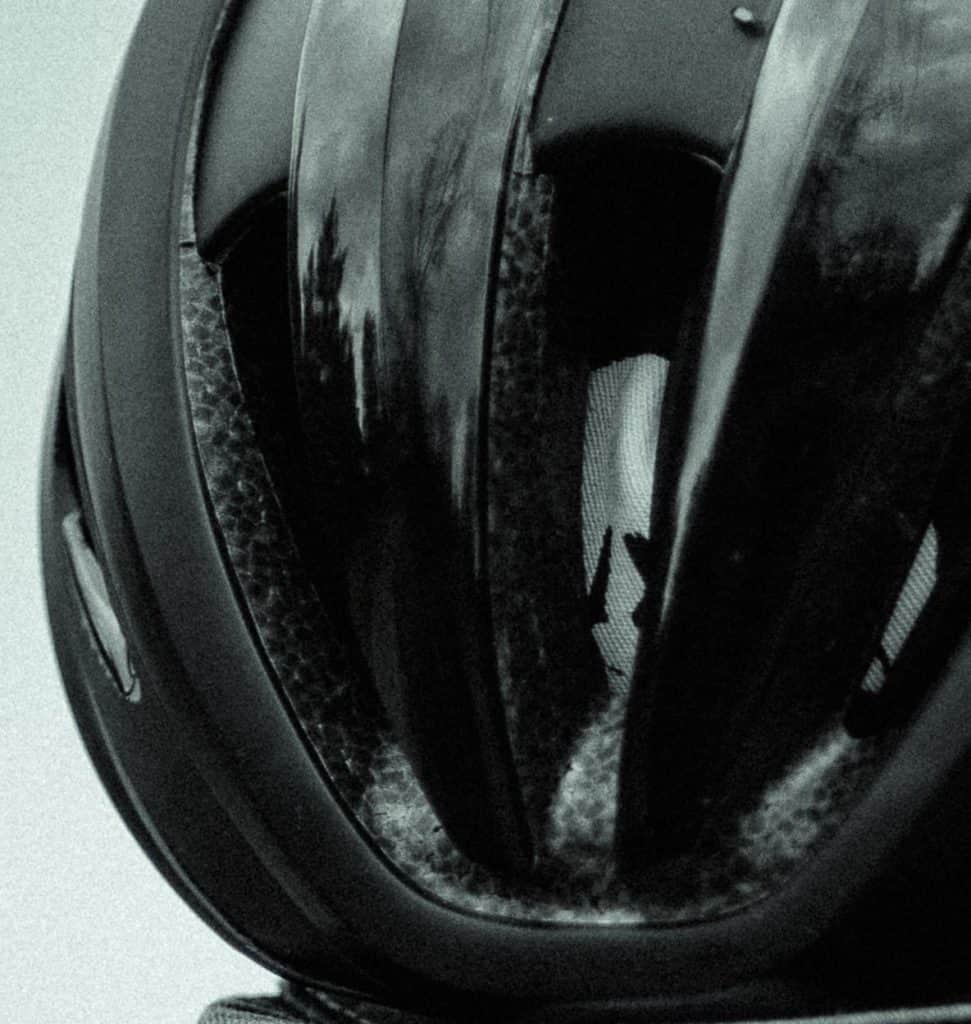
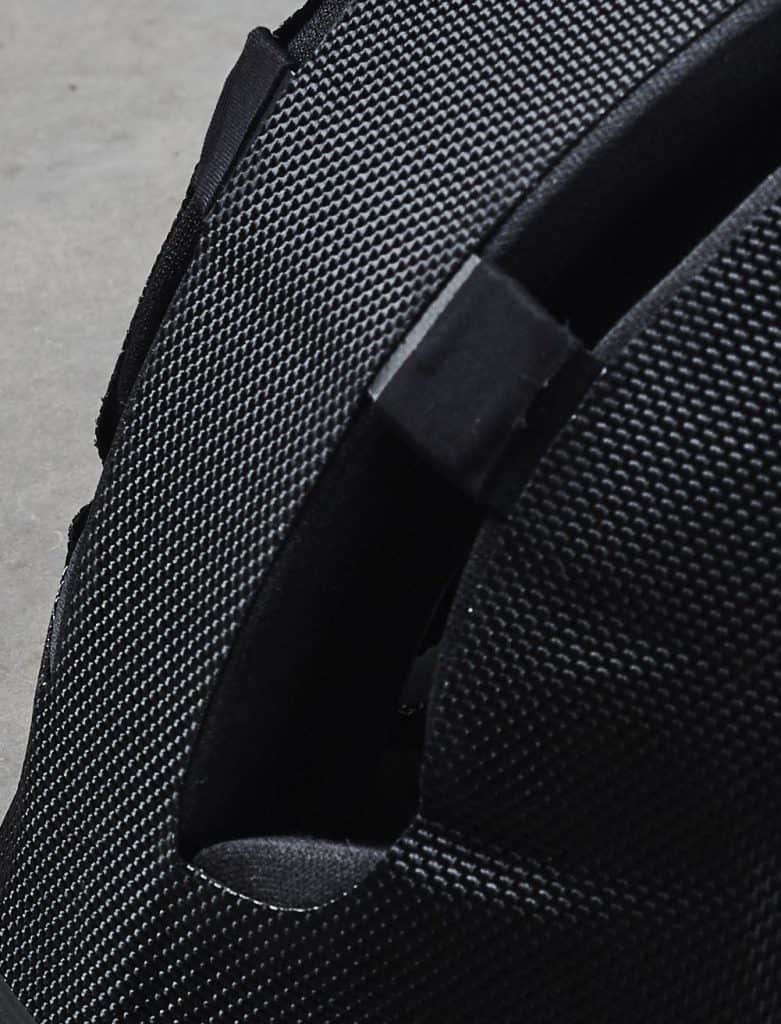
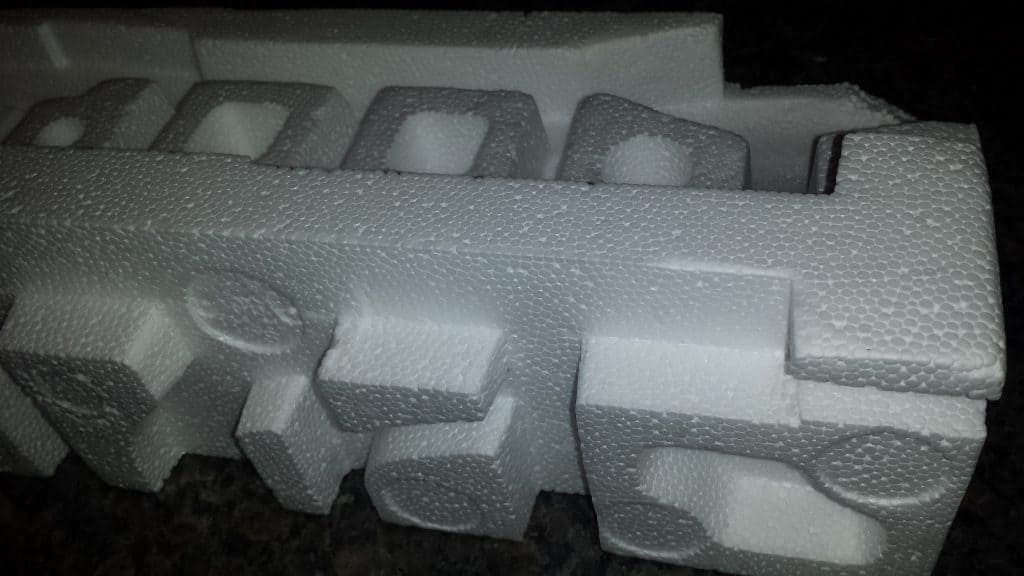

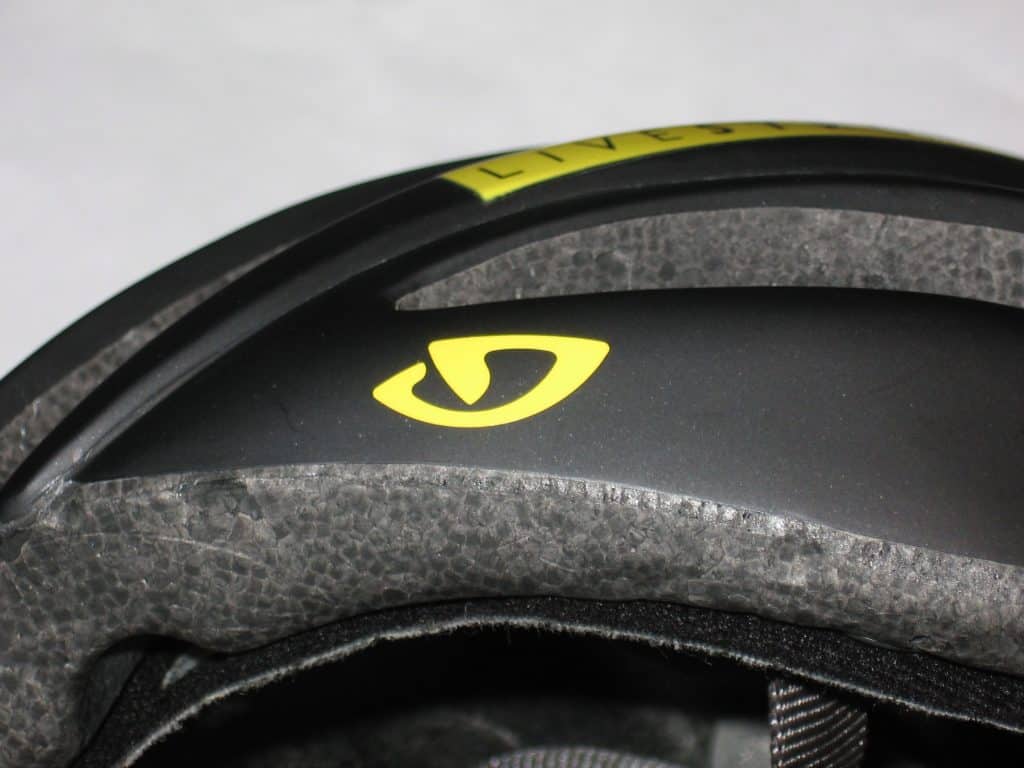
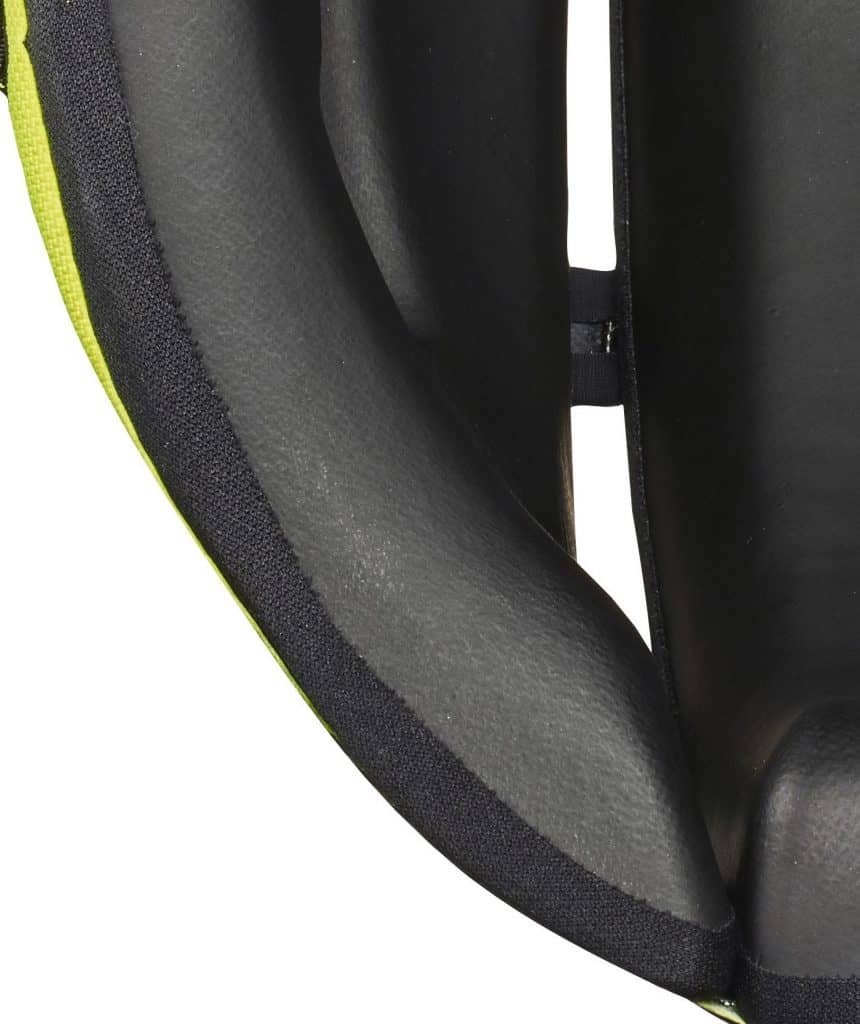
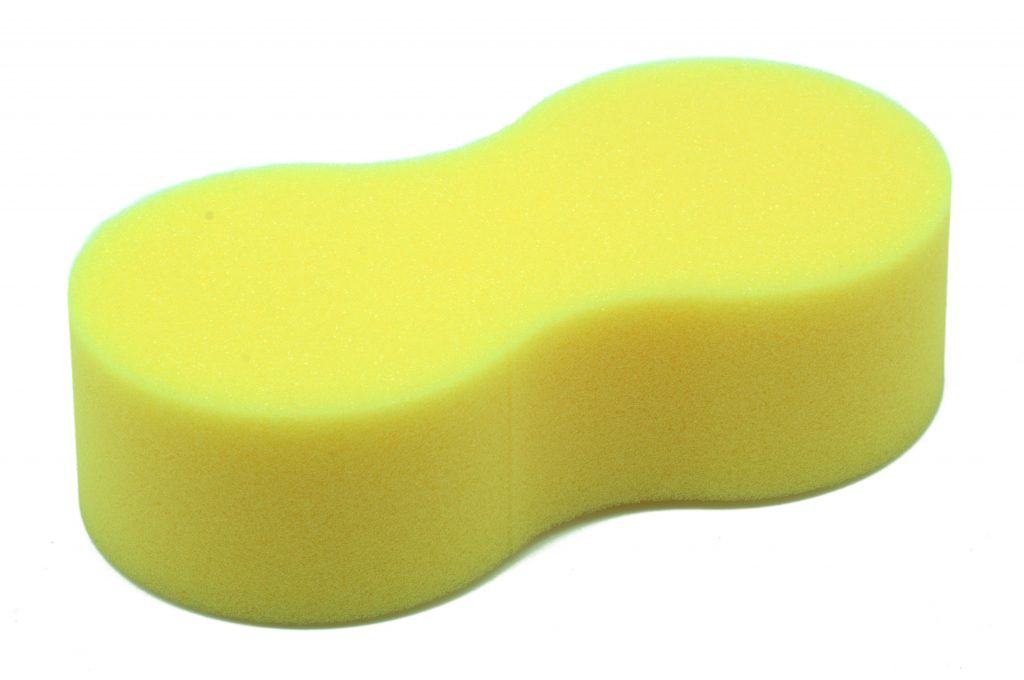
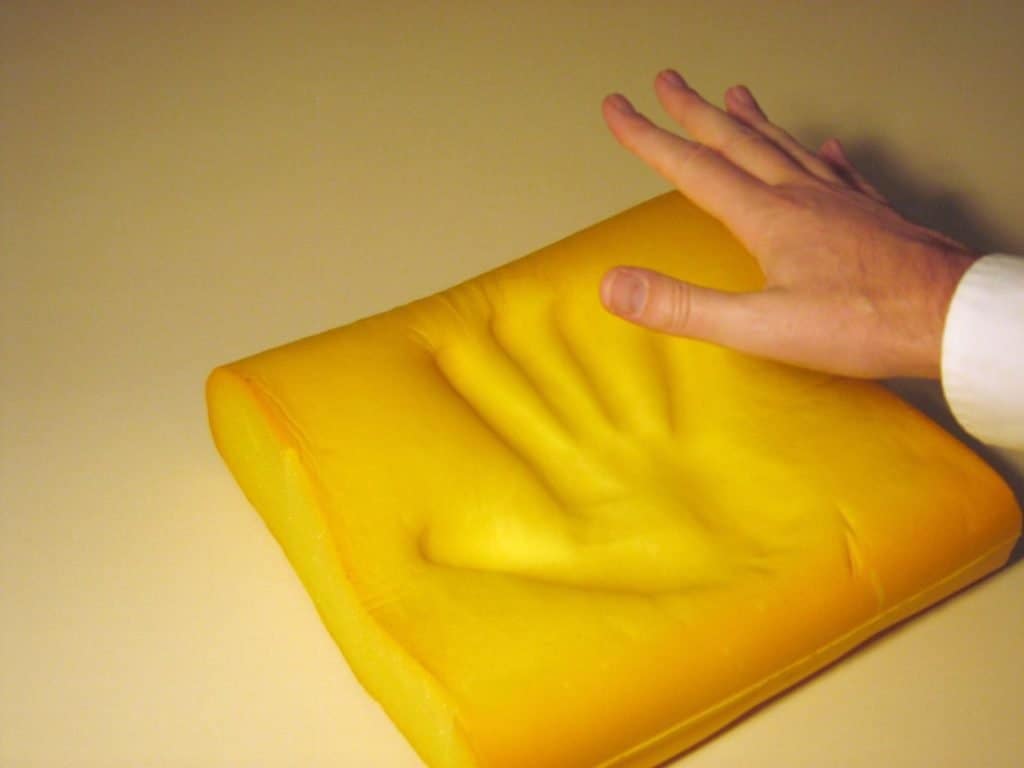
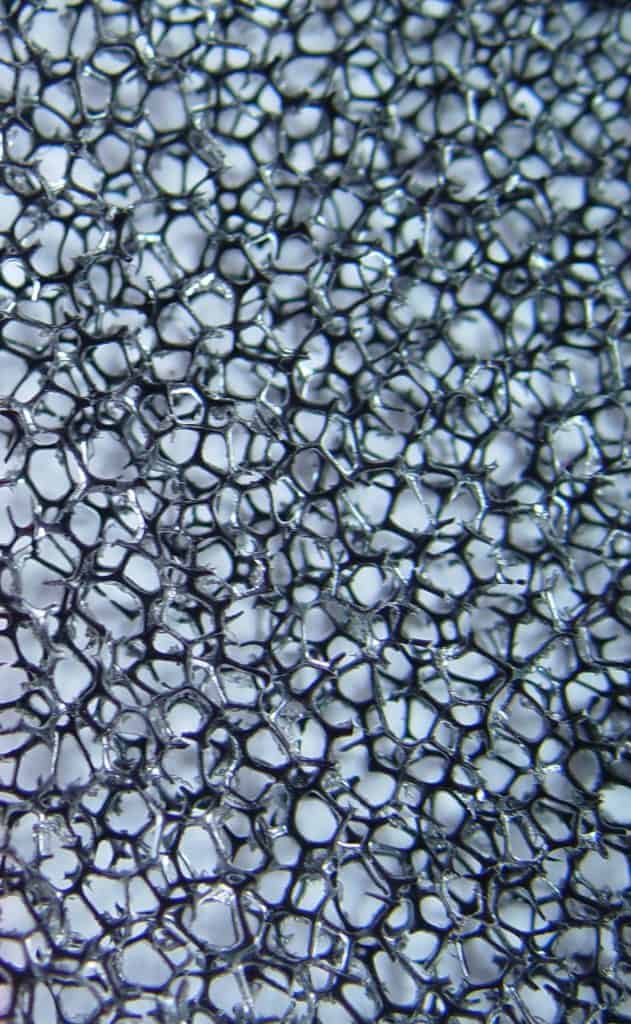
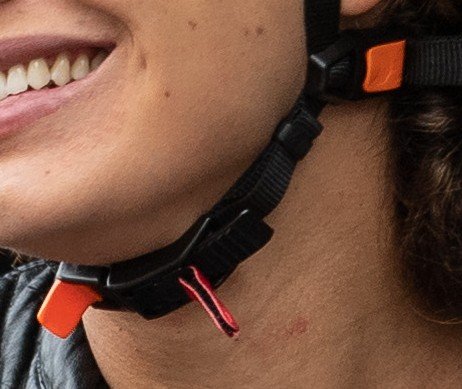
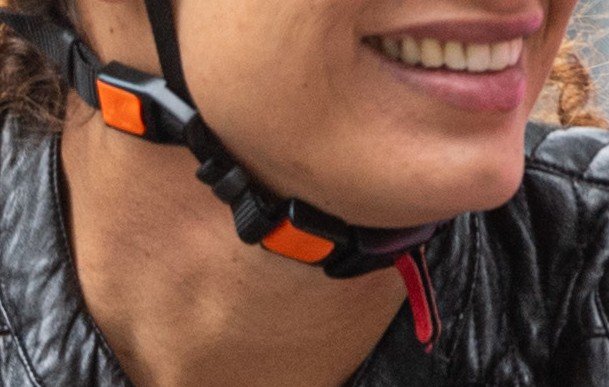
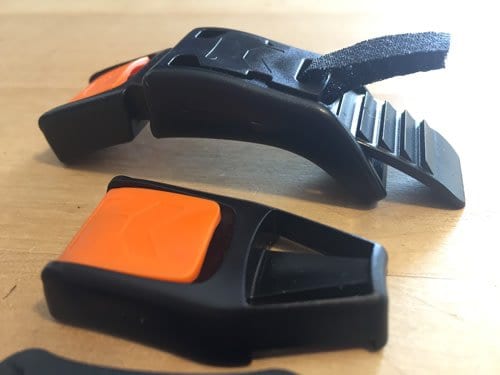

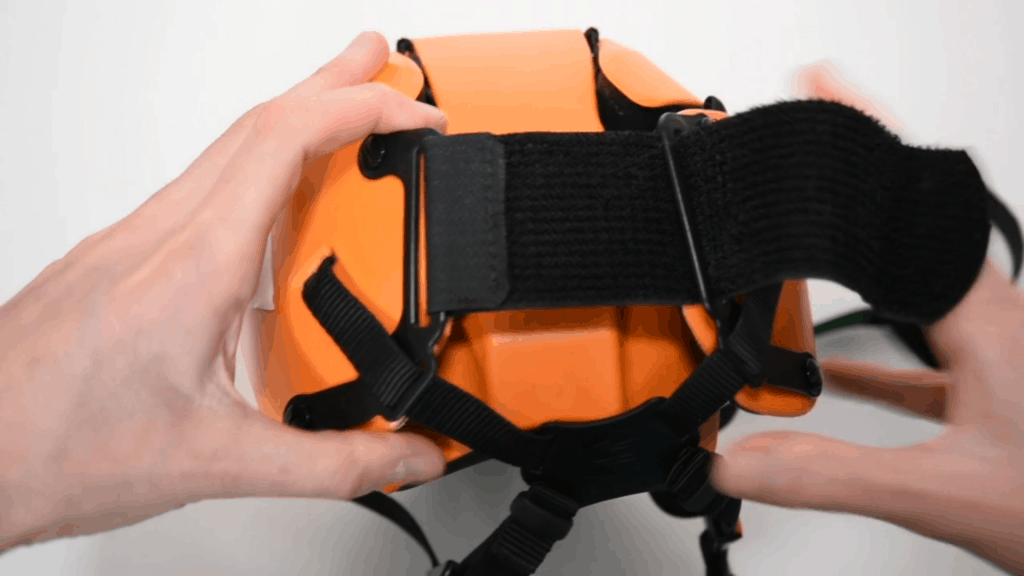
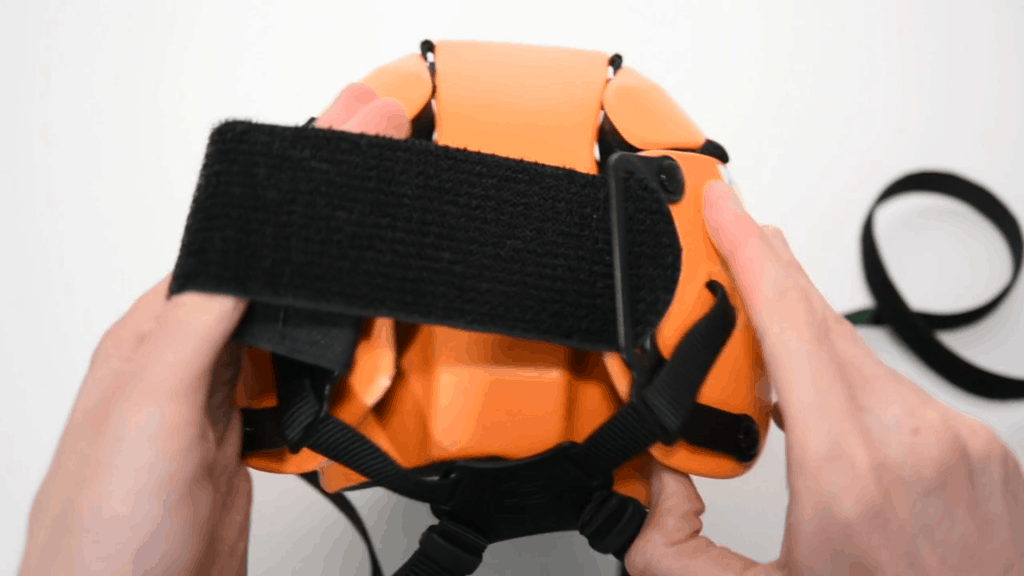
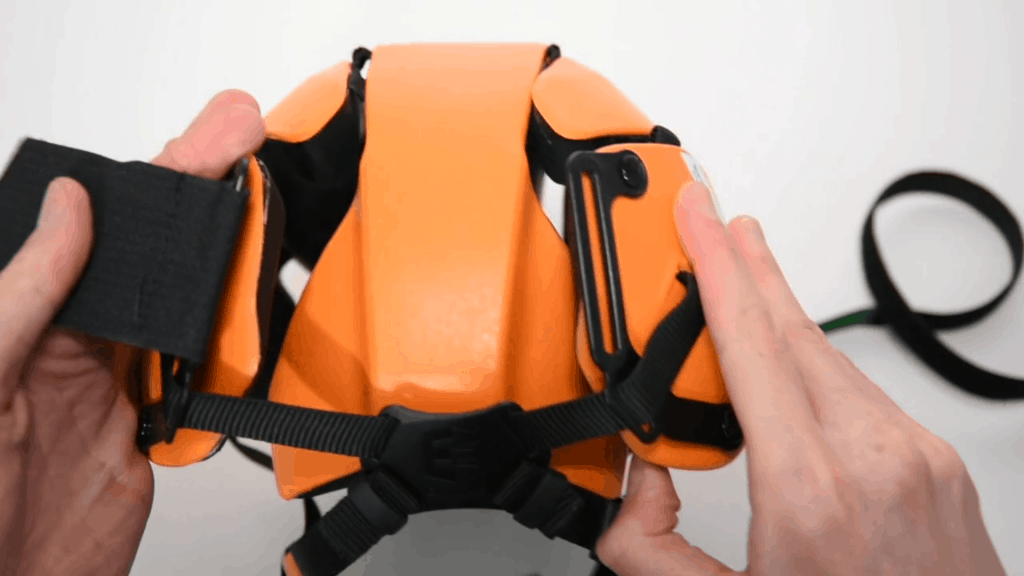
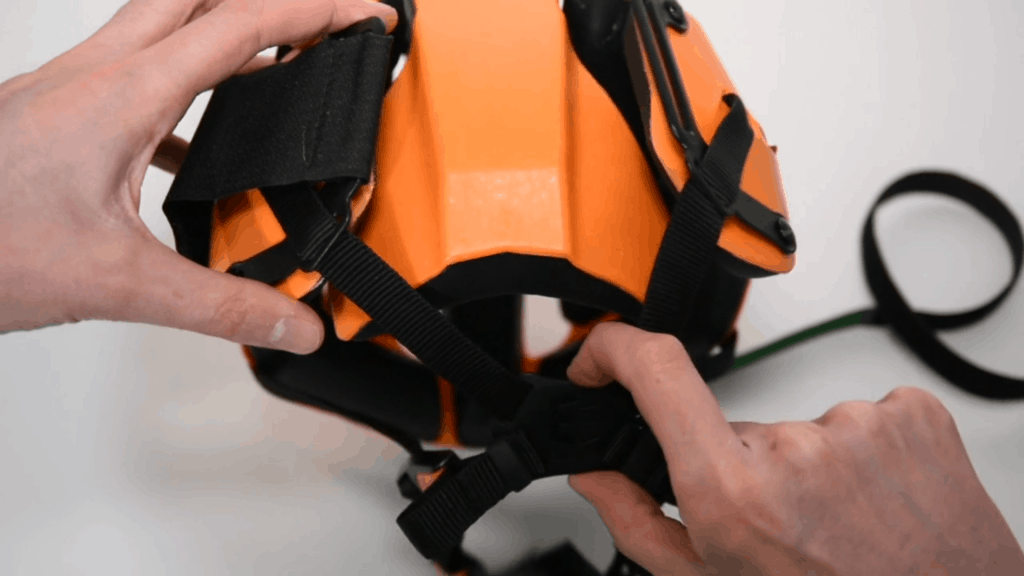
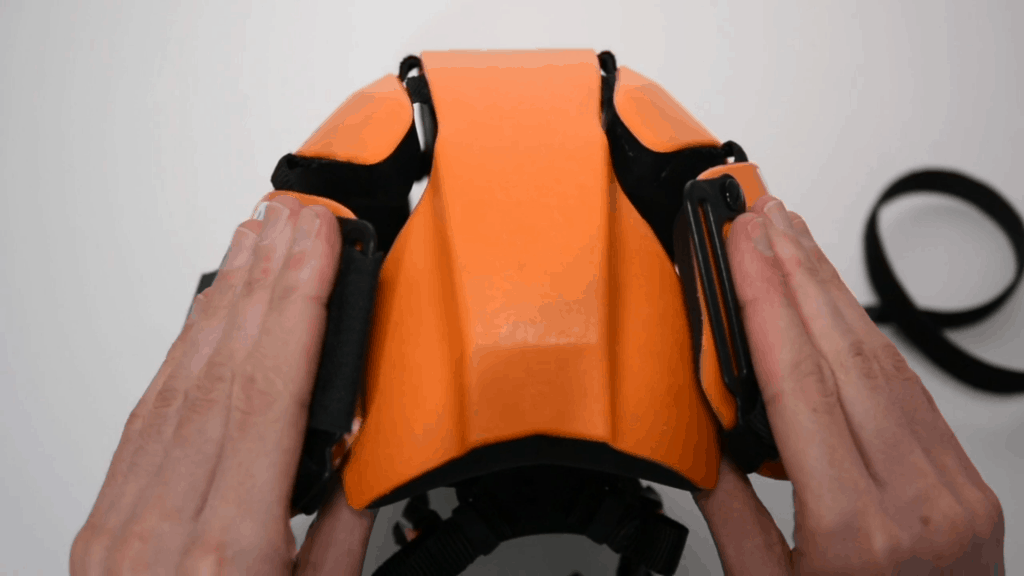
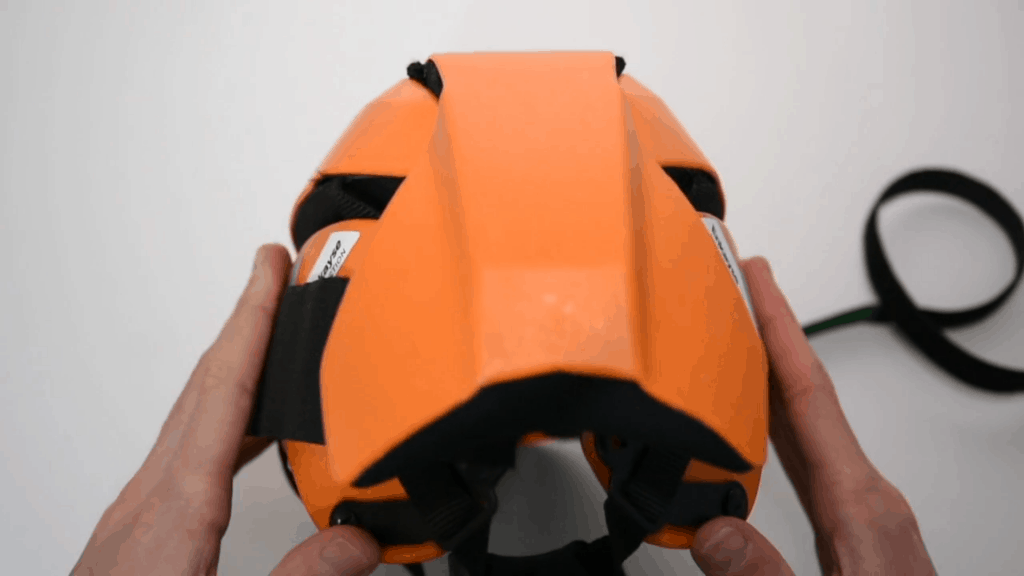
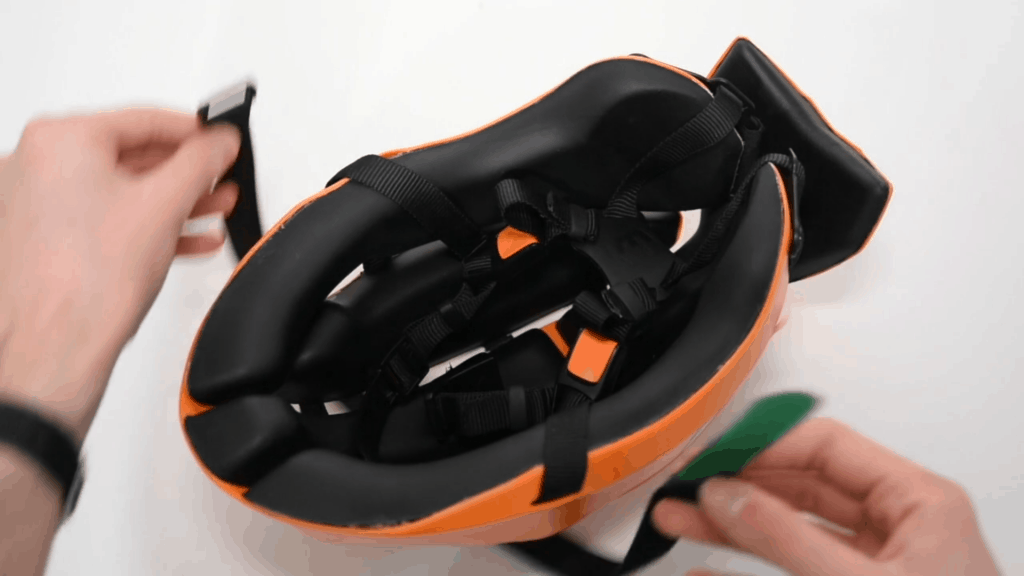
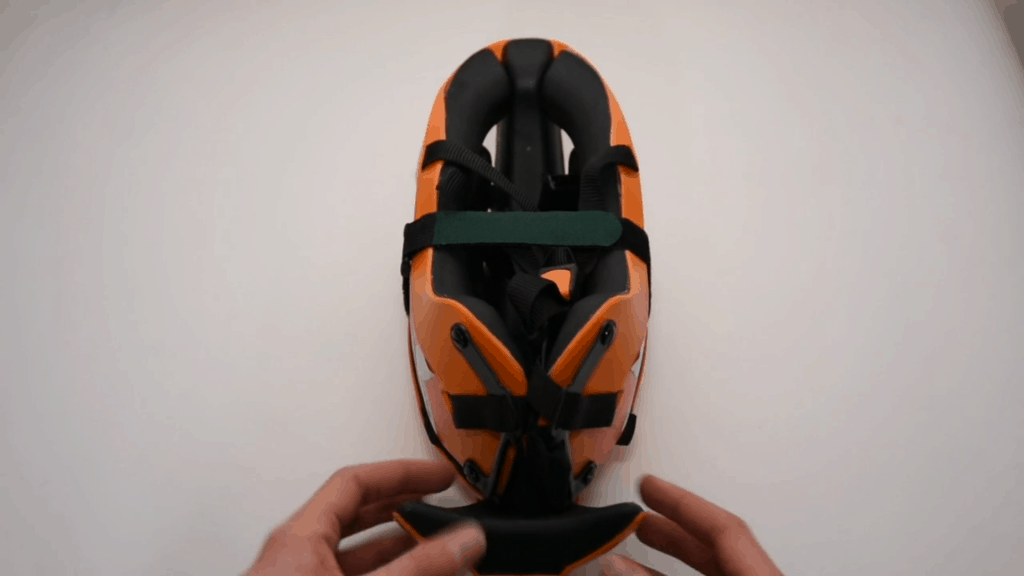
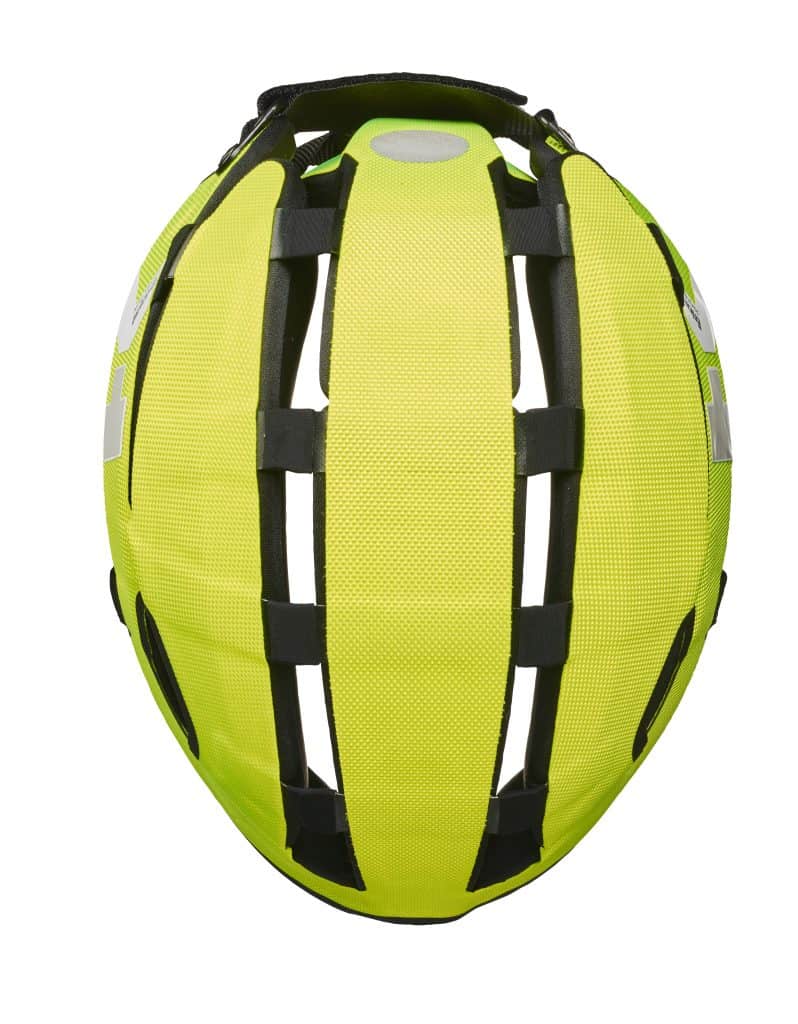
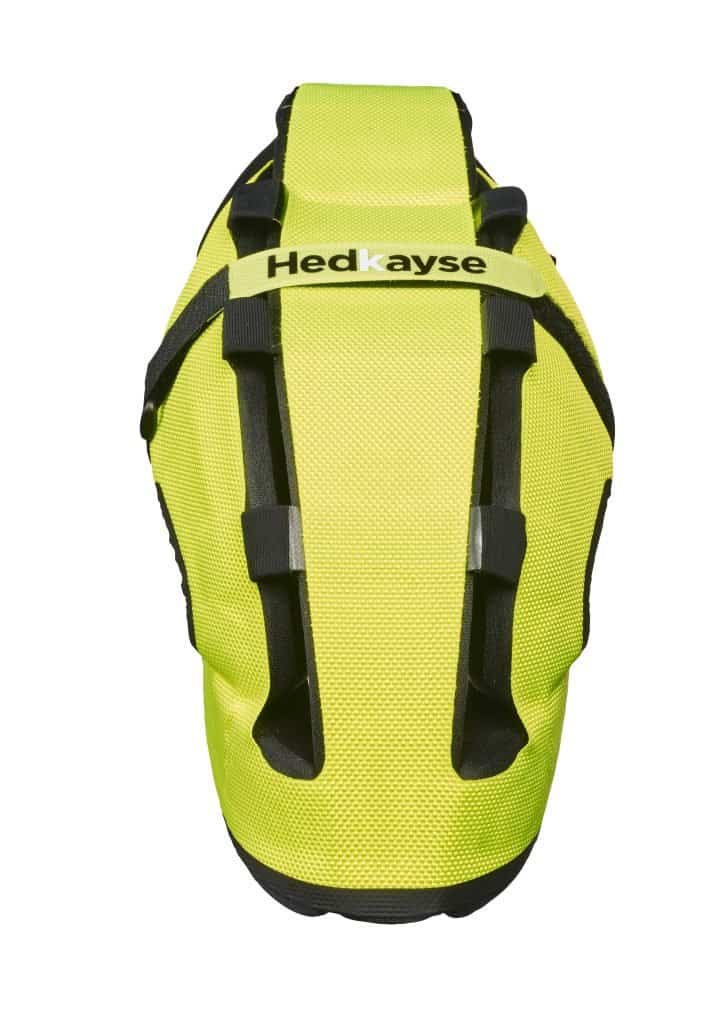
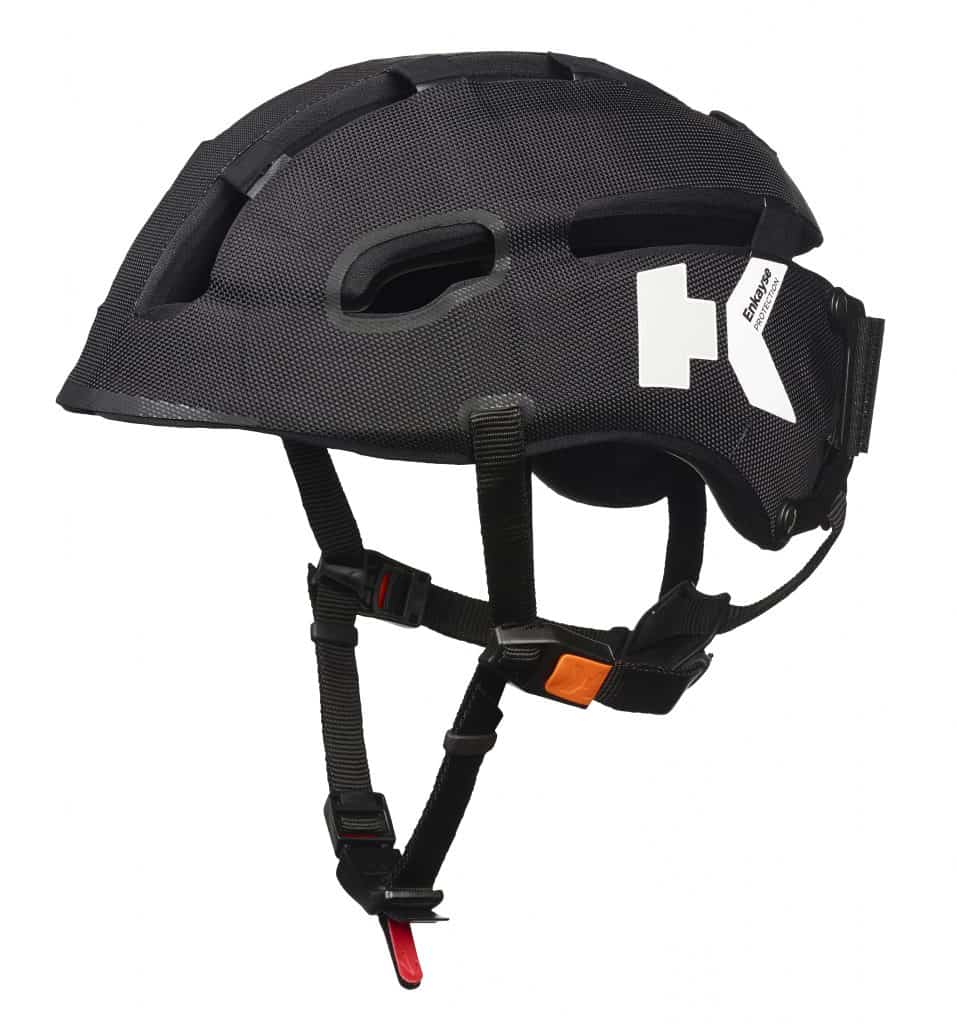
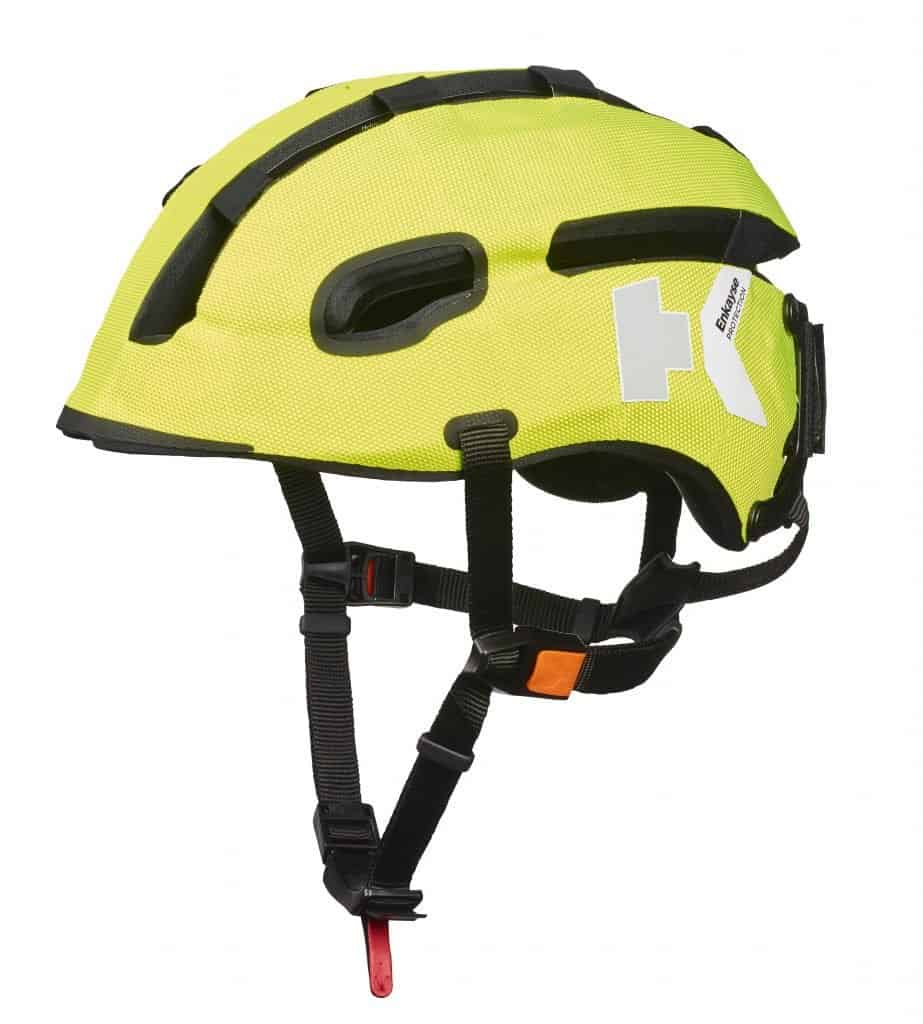
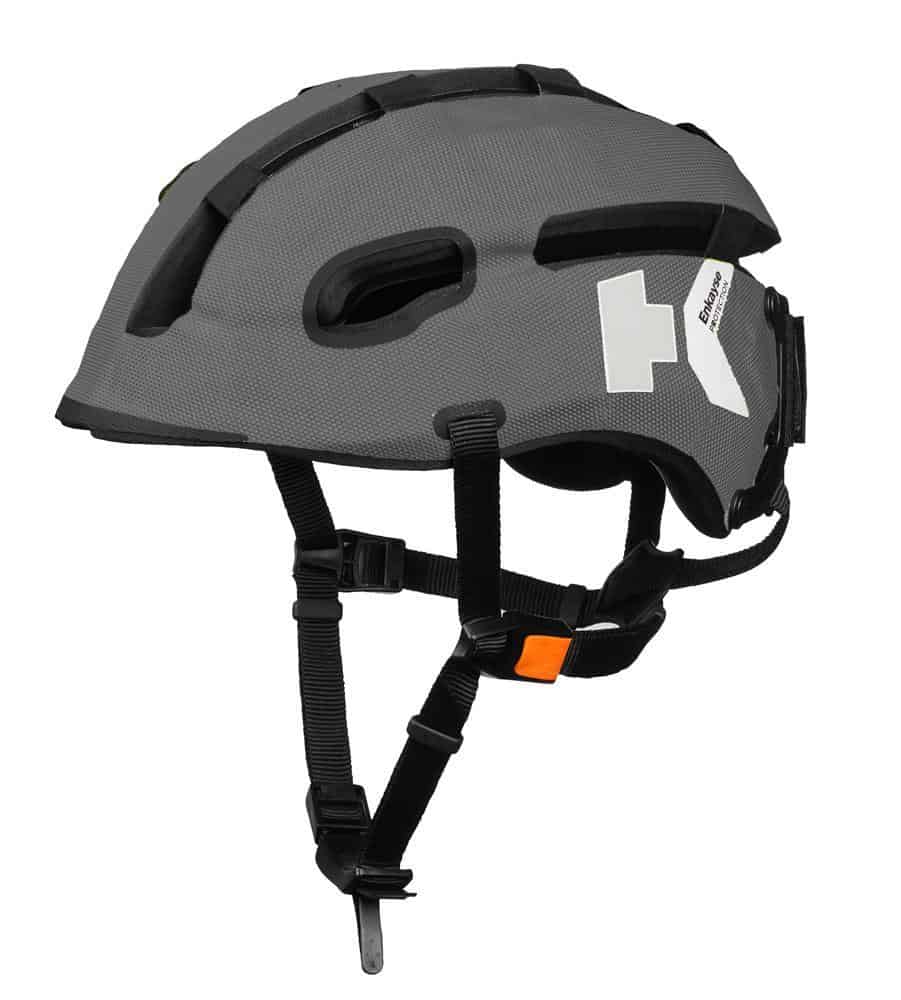
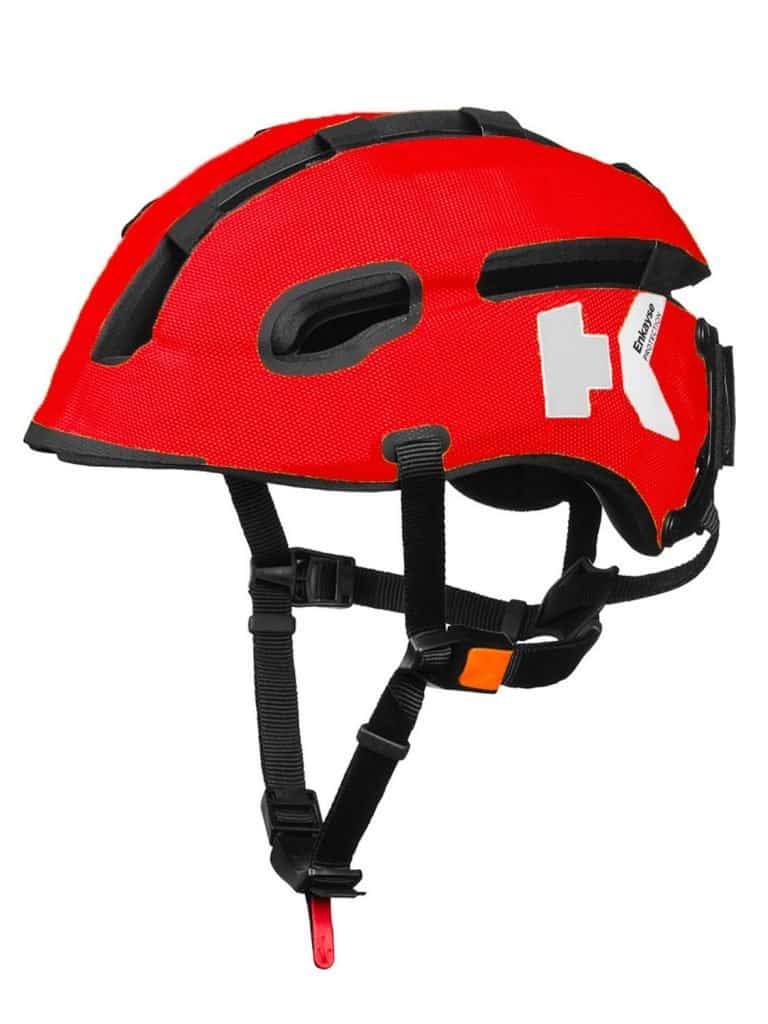
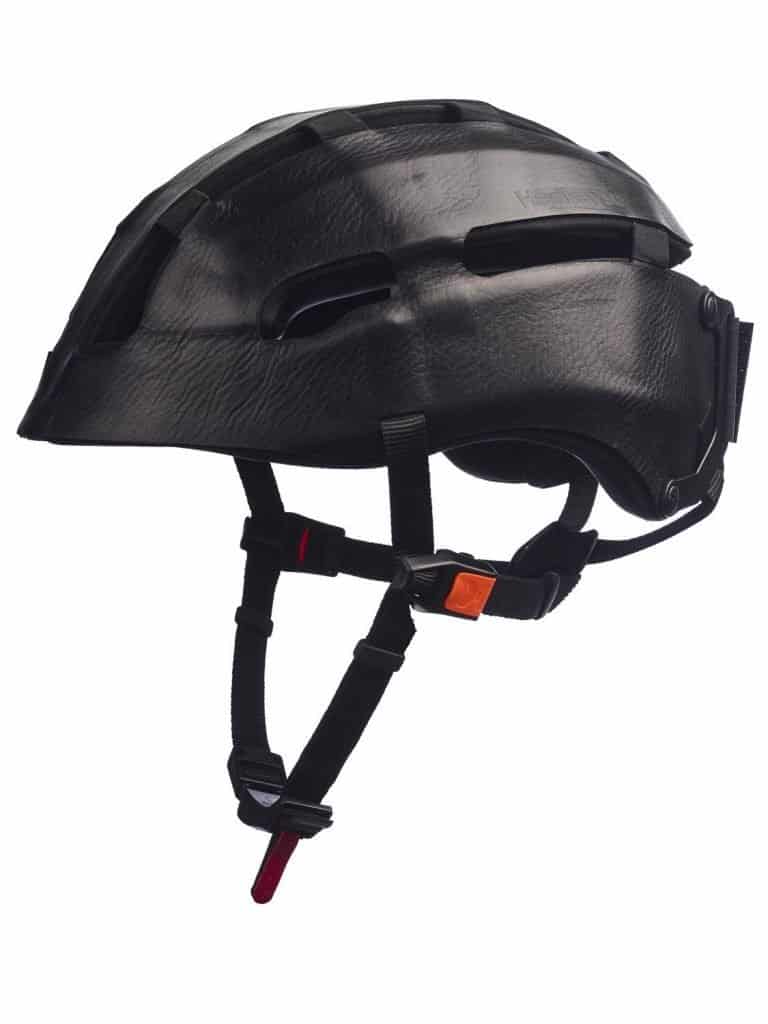
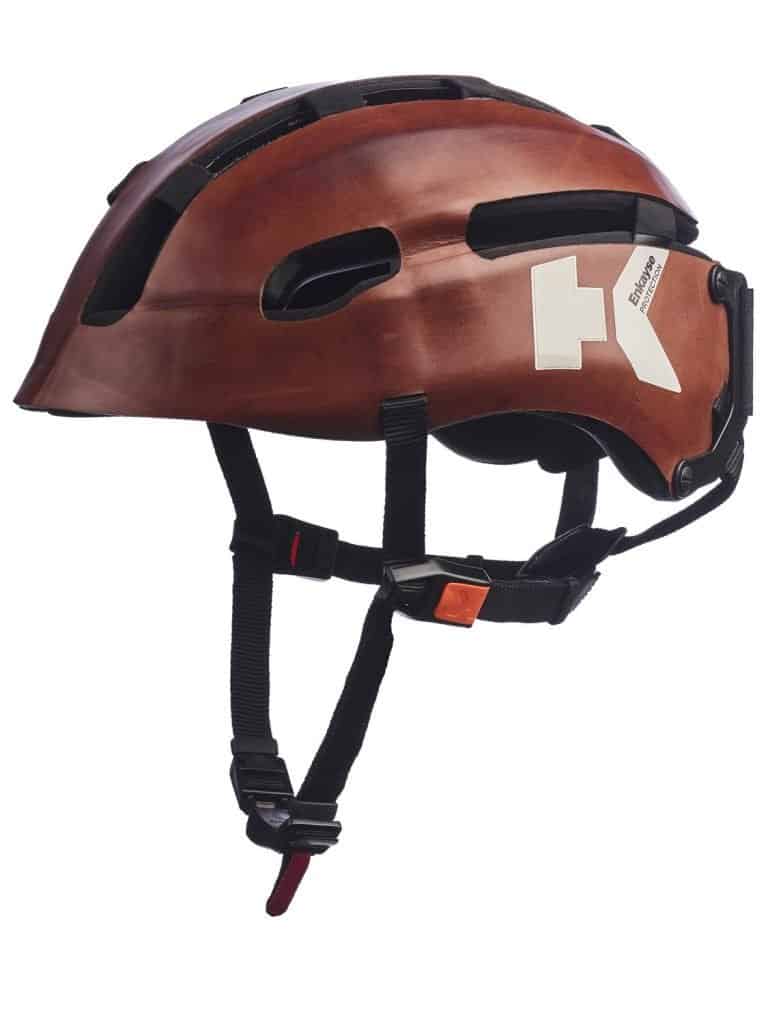
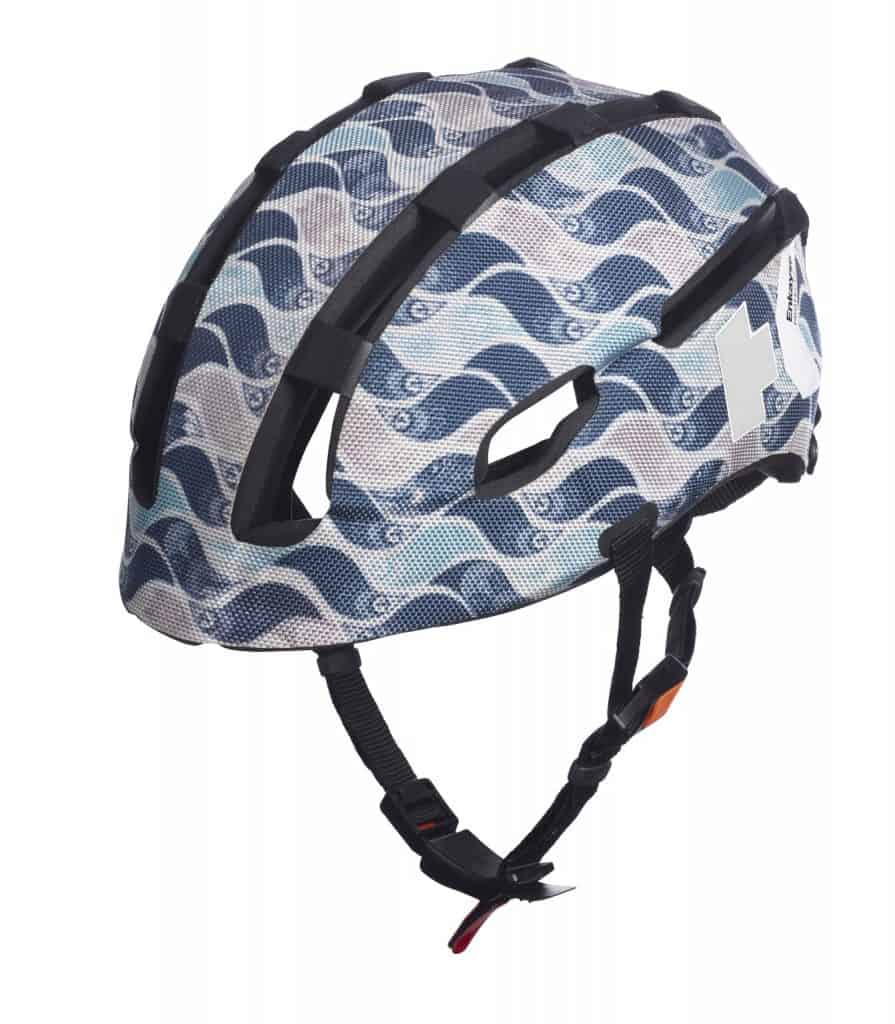
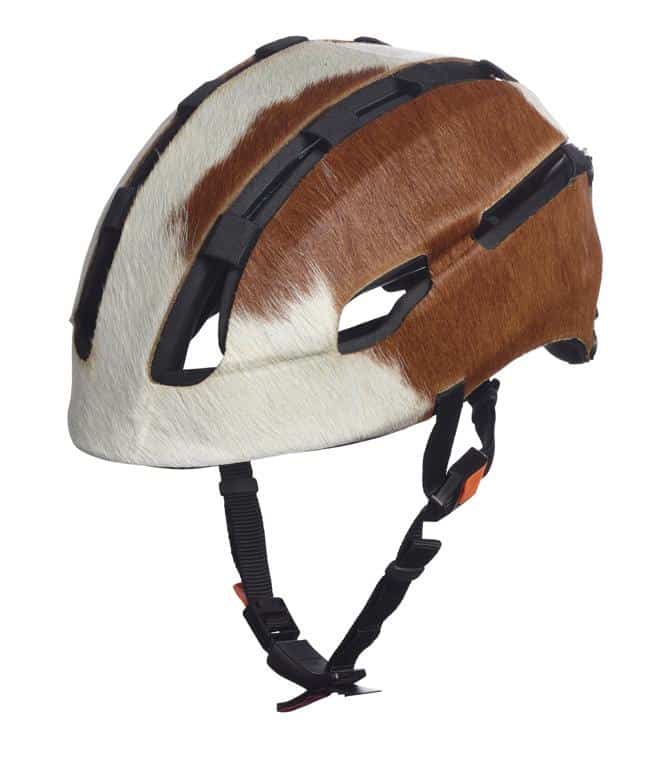
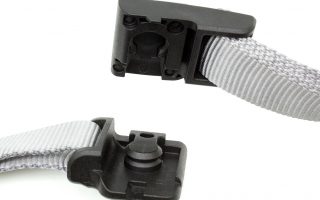
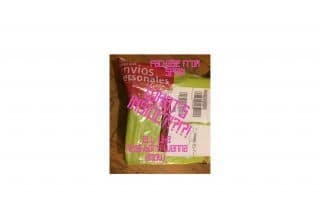
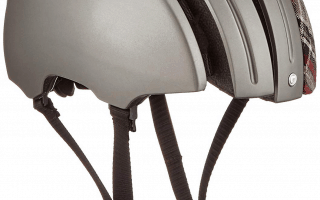
I am a backer of the project and was also fortunate enough to be part of the beta testing programme. This is a great, thorough review and you have pretty much covered all the same pros and cons I came across and fed back to Hedkayse. The outer shell was originally made from a very tough pliable plastic they named TAF (not sure if I spelled that right or if it’s an acronym for anything). It really was “bullet-proof”, you might say and arguably made the helmet more aesthetically pleasing and provided slightly more protection from rotational impacts. However, it added almost 200g of weight to the helmet overall. The ballistic nylon gives HK the ability to do custom designs (as well as being so much lighter) and I think this was a good move to further differentiate the product offering. Overall, I love my HK ONE and despite the extra weight, heat and some niggly fitting issues borne out of the foldability aspect, I have not gone back to my EPS Giro which has been on standby for over 5 years now! My use is predominantly for commuting and occasional off-road single-track fun on the MTB.
Hi Tim, thank you for your comment- we’re so glad you liked our review and that it’s consistent with your own experiences! It’s great having your feedback as a backer and beta tester- you really know the history of the helmet’s development! Stay tuned for more reviews and follow us on Twitter @ThingsThatFold!